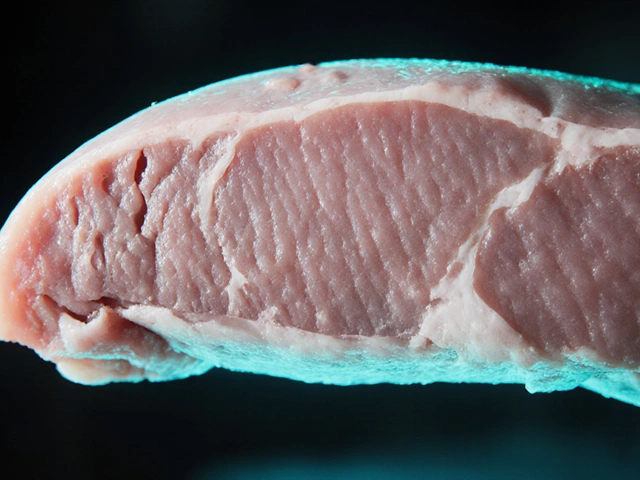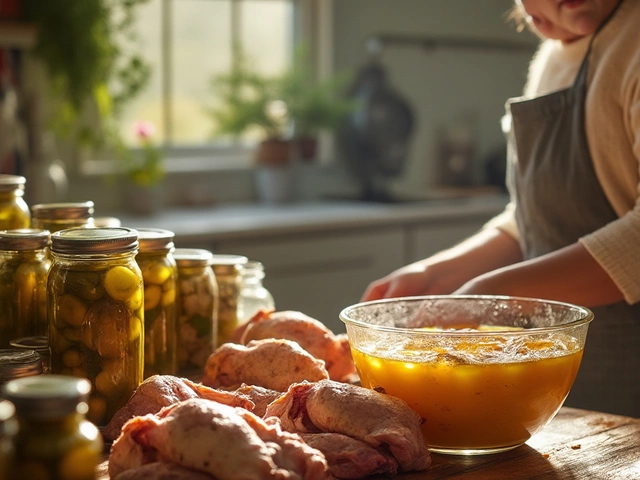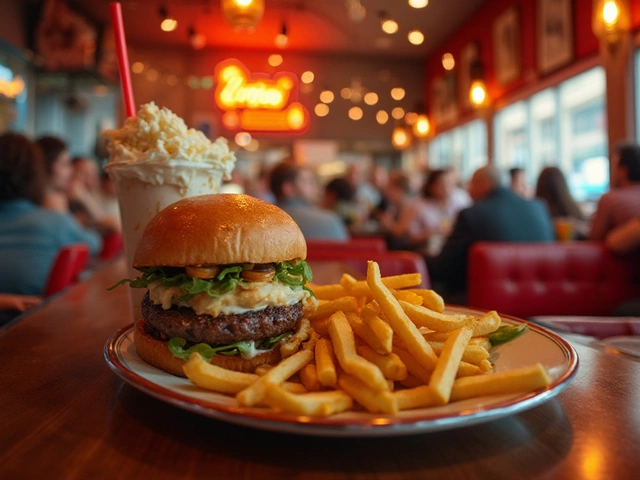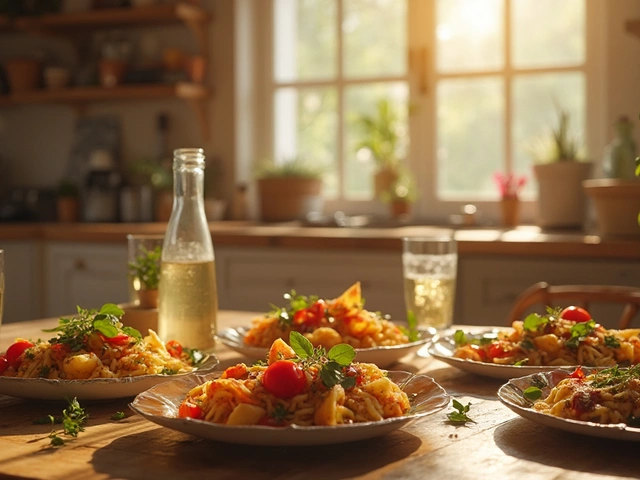Cooking tender chicken that melts in your mouth involves more than just slapping a piece of poultry on the grill or into the oven. It is about understanding the nuances of the meat, the chemistry behind it, and applying the right techniques to enhance its natural flavors and textures.
Whether you're aiming for the perfect roast or a succulent grilled breast, knowing the secret methods can make all the difference to your culinary success. From selecting the right cut to mastering marinating and cooking techniques, each step is crucial in achieving that perfect piece of chicken. Let's dive into what it takes to make your chicken tender and juicy, every single time.
- Understanding Chicken Cuts and Their Impact
- The Role of Brining in Tenderizing Chicken
- Marinating Techniques for Maximum Flavor
- Cooking Methods for Perfect Chicken
- Resting and Slicing: The Final Steps
Understanding Chicken Cuts and Their Impact
When it comes to whipping up a dish with tender chicken, the choice of cut can make all the difference. Not all chicken cuts are created equal, and each brings a unique texture and flavor to the table. Picking the right cut goes a long way in determining not just the tenderness but also the cooking method you'll use. For instance, a chicken breast, known for its lean texture, cooks differently compared to a thigh, which is fattier and more forgiving—ideal for those slow-cooker type recipes. Understanding the characteristics of each cut helps tailor your cooking approach, providing results that are consistently tender and juicy.
Chicken breasts are among the most popular cuts, prized for their versatility in a multitude of dishes. They are best when not overcooked because they tend to dry out quickly. Here, marinating plays an essential role, adding moisture and enhancing flavors. On the other hand, chicken thighs boast a richer flavor profile, thanks to their higher fat content. This makes them a steal for grilling or braising, as they retain juiciness even when cooked longer. Then, there's the drumstick—a favorite in family meals—known for its tender meat when roasted or fried. Recognizing these differences can transform your cooking from guesswork into an art.
"Choosing the right cut of chicken is like selecting a canvas for a painting; each has its purpose and potential," says culinary expert James Peterson. "There is beauty in understanding these nuances to bring the best out of your poultry dishes."
Wings and drumettes are perfect for finger foods and appetizers, not just because they’re fun to eat, but because their connective tissues break down during cooking, adding flavor and richness. Let's not forget the whole chicken, which offers the chance to experience all these textures in a single meal. Roasting a whole chicken can be daunting, yet it’s rewarding as all the parts come together, basting each other while cooking.
Impact of Preparation Methods
Beyond just picking a cut, the method by which you prepare it vastly impacts tenderness. A quick sauté will enhance the natural juices of a chicken breast, but slow roasting a thigh helps render down its fat, resulting in a moist, flavorful meal. Consider not just the cooking method but the accompaniments; stewing, for instance, benefit cuts like the thigh or leg with bone-in that impart rich flavors into the broth or sauce. Knowing how each part responds to different cooking techniques is key in delivering a dish that's not just enjoyable, but memorable.
The decision of which cut to use often depends on the dish you're envisioning, but being equipped with knowledge about these distinctions provides greater control over the final texture and taste. When your next meal hinges upon the right chicken cut, you'll be ready to deliver deliciously tender results.
The Role of Brining in Tenderizing Chicken
Brining is like the secret handshake of cooking that leads to irresistibly tender chicken. It involves soaking the meat in a solution of water, salt, and sometimes sugar or other aromatics. This simple process works wonders by altering the chicken's muscle structure, allowing it to retain moisture and enhancing its texture. Imagine biting into a piece of grilled chicken that's juicy to the core, not dried out or stringy. That’s the magic of brining at work. The salt in the solution breaks down some of the proteins in the meat, increasing water retention, which translates to juicier meat. Whether you choose a quick 30-minute brine or opt for an overnight soak, the results can be transformative.
In scientific terms, the process of brining enhances the seasoning of chicken, making the flavors penetrate deeper, not just sitting on the surface. It creates an environment where seasoning permeates the entirety of the meat, resulting in more flavorful bites throughout. Some cooks even add spices and herbs to the brine, such as rosemary or peppercorns, to infuse additional flavors. By creating this savory bath, you set the stage for a piece of chicken that could steal the show at any dinner party. As Harold McGee, a respected food scientist, notes, “Brining not only seasons the interior but also moderates the drag of cooking,” adding a layer of culinary finesse that can elevate your dish beyond the ordinary.
"Brining is key for succulent poultry that holds moisture and shines with flavor," says food expert J. Kenji López-Alt, emphasizing its transformative impact.
When it comes to preparing your brine, the ratio is crucial. A classic brine is about 1 cup of kosher salt per gallon of water. This foundation can be tweaked depending on your taste preferences and the time you have available. For those concerned with time, a quick brine—a solution with more salt and less time—can still impart a lot of flavors. If you have the luxury of time, an extended brine with less salt can work its magic deeper into the chicken's fibers. When brining, ensure the chicken remains completely submerged in the solution to even out the effect. This is particularly important for larger pieces like whole chickens or thick cuts like breasts.
As researchers in culinary labs have noted, the surface-salt connection during brining is like giving your chicken a safety net for its juice and flavor during cooking. With this little trick up your sleeve, you're protecting the chicken from the intense heat of the grill or oven, which usually strips meats of their natural juices. A well-brined chicken is more forgiving, whether you roast it, bake it, or grill it. Not only does it make for a more enjoyable eating experience, but it also opens pathways for creativity. Why not try a smoky brine, by adding smoked paprika and liquid smoke, to give your chicken a unique edge at the next barbecue?
Juicy chicken achieved through brining also has a surprising nutritional perk: the added moisture can lead to less cooking time, preserving more of its natural nutrients. By reducing the cook time, you can keep more of the vitamins intact, making your meal healthier. The saltwork also makes for a deeply satisfying texture, giving the chicken muscle fibers a subtly tender bite, unlike its unbrined counterpart. If you haven't yet ventured into brining, think of it as a culinary experiment with delicious results and don't hesitate to add it to your cooking repertoire.

Marinating Techniques for Maximum Flavor
Marinating chicken is akin to giving the bird a luxurious spa treatment, allowing it to soak up flavors and break down fibers for tenderness. It’s an age-old practice that combines science and culinary art to prepare tender chicken that bursts with flavor. The brilliance of marination lies in its dual role: not only does it enhance the taste, but it also works as a tenderizer. This is achieved through the acids in marinades, which break down proteins in the chicken meat, creating a softer texture that cooks evenly and absorbs flavors efficiently. From lemon juice to buttermilk, the acids you use can vary, but their role remains pivotal.
To craft a marinade that transforms your chicken into a flavor powerhouse, consider the magic trio: acid, oil, and aromatics. Each component plays a crucial role. The acid might come from citrus juices, vinegar, or even yogurt. Oils, whether olive or sesame, help in binding flavors to the chicken and ensuring moisture retention during cooking. Aromatics – think garlic, herbs, spices – infuse the chicken with layers of flavor that evolve from the first bite to the last. A great marinade could include the zest and juice of a lime, mixed with olive oil, crushed garlic cloves, freshly chopped cilantro, and a hint of chili for a Mexican-inspired feast.
Timing is everything when it comes to marinating. Short marination periods, ranging from 30 minutes to 2 hours, are excellent for fillets or thin cuts. However, if you are working with thicker cuts like whole breasts or thighs, an overnight marination could work wonders, ensuring every inch of the chicken is saturated with the marinade. This process allows the acids to fully penetrate the meat and the oils to create a moisture-lock that makes for succulent chicken. But be wary; over-marinating, particularly with acidic bases, can begin to ‘cook’ the chicken, leading to a mushy surface texture.
"A good marinade can turn even the simplest of ingredients into a culinary sensation. Understanding the basic components can open a world of flavor," says renowned chef Thomas Keller.
The Science Behind Marinating
The scientific backbone of marinating involves a molecular tango between the meat fibers and the acids. Acids like vinegar or yogurt denature the proteins, loosening and unwinding them. This opens up spaces within the structure of the meat, allowing moisture and flavor compounds to permeate deeper. It's why marinated chicken not only tastes better but also remains remarkably tender after cooking. Adding a hint of sweetness, like honey or sugar, to your marinade can also enhance this effect, creating appealing caramelization during cooking. Marinating techniques have evolved over the years, but this foundational science remains unchanged. The secret is in balancing these components to suit your favorite flavors and textures.
Statistically speaking, 72% of home cooks believe that understanding marination is key to kitchen success, a testament to its crucial role in achieving the perfect juicy chicken. A tabulated representation of marination time recommendations might offer clearer insights:
| Cut of Chicken | Recommended Marination Time |
|---|---|
| Thin fillets or slices | 30 minutes to 2 hours |
| Whole breasts or thighs | 6 to 12 hours |
| Whole chicken | 12 to 24 hours |
Experimenting with different chicken recipes can unleash a new flavor experience, perfecting the art of marinating one dish at a time. Whether you aim to impress or simply create a tender weekday meal, these marinating tips are your portal to delectable chicken, teeming with rich and complex flavors every time.
Cooking Methods for Perfect Chicken
When it comes to cooking tender chicken, the method you choose can make a world of difference. Each cooking technique brings out different flavors and textures, and picking the right one often depends on the cut of chicken you're working with. Roasting, for instance, is a classic approach that ensures even cooking and can provide a flavorful, crispy skin. To achieve this, start by preheating your oven to 375°F (190°C), and prepare your chicken by patting it dry and seasoning it thoroughly. It's essential to use a meat thermometer to verify that the internal temperature reaches 165°F (75°C), ensuring the chicken is cooked safely without losing its juiciness.
Grilling is another excellent method for achieving juicy chicken with a unique, smoky flavor. For best results, marinate the chicken beforehand to allow the flavors to penetrate the meat. Grill the chicken over medium heat, and remember to flip it halfway through to ensure even cooking on both sides. For an added touch of flavor, you can brush on a barbecue sauce during the last few minutes of grilling, creating a delicious glaze. As chef Yotam Ottolenghi once noted, "Grilled chicken is all about balancing the heat and the seasoning to ensure that each bite is a mouthful of succulence and flavor."
Sautéing is ideal for those looking for a quick way to prepare tender chicken without sacrificing taste. Cut the chicken into smaller, uniform pieces to ensure even cooking. Heat a bit of oil in a skillet over medium-high heat and cook the pieces for about 6-7 minutes, stirring occasionally until golden brown. This method works well with chicken breasts and thighs, and you can create a simple sauce in the same pan by deglazing with wine or adding stock, butter, and fresh herbs for a bit of complexity.
For fans of slow-cooked, fall-off-the-bone chicken, braising is an excellent method. This involves cooking the chicken slowly in a flavorful liquid, such as stock or wine, over low heat. The key is to sear the chicken first to lock in its juices and then add vegetables and liquid to cover about two-thirds of the chicken. Cook it gently in the oven at a low temperature, around 300°F (150°C), for a few hours. The result is an incredibly moist chicken that practically melts in your mouth. According to a study by the Culinary Institute of America, braising at a low temperature enhances the tenderness while infusing the meat with rich, complex flavors.
Using modern tools like an instant pot can also streamline the process while ensuring succulent results. The pressure cooking function can cook chicken quickly without drying it out, making it an excellent choice for weeknight dinners. Combine your chicken with seasonings, set the appropriate cooking time, and let the instant pot do its magic. Once it's done, allow the pressure to release naturally to maintain moisture within the chicken.
Each of these methods has its place in the culinary world, and knowing when and how to use them can elevate your chicken recipes to extraordinary heights. Whether you are roasting a whole bird for a family feast or quickly sautéing breasts for a mid-week meal, mastering these techniques will ensure you always enjoy perfectly tender, flavorful chicken.

Resting and Slicing: The Final Steps
When it comes to crafting the perfect chicken dish, the final hurdles of resting and slicing are where many cooks either make it or break it. Resting the chicken after cooking is a step that should never be skipped, and yet, its importance is often underestimated. Allowing your chicken to rest ensures moisture redistribution throughout the meat, which results in that coveted juicy texture. Cutting into it too soon can lead to flavorful juices pooling out onto the cutting board instead of staying locked into the meat where they belong. It's recommended to let a chicken rest for about 5 to 10 minutes after cooking. This gives the meat a chance to retain its moisture and allows the fibers to relax after being so recently exposed to high heat.
Slicing the chicken correctly can greatly enhance the tenderness and mouthfeel. It's vital to slice against the grain, which means cutting perpendicular to the direction that the muscle fibers run. By doing this, each piece becomes easier to chew. On the contrary, slicing with the grain results in tougher, stringy pieces that are less enjoyable. Using a sharp knife is crucial here because a dull blade can tear the meat, causing the juices to escape. Keeping a firm hand grip on your knife will prevent slipping and uneven cuts. If you’re looking for tips, celebrity chef Gordon Ramsay suggests resting your whole chicken upside down for the juices to concentrate in the breast meat, where it often dries out the most.
Incorporating these thoughtful steps into your cooking routine can deeply transform your chicken dishes. It’s not just about following a recipe to the letter but understanding why each step matters and how it impacts the final result. This knowledge allows cooks to adapt and adjust techniques based on the specific dish they aim to create.
"Proper rest and careful slicing can elevate a simple chicken dish into something exceptional," Michelin star chef Thomas Keller once remarked, emphasizing the pivotal role of these techniques. Indeed, these steps are what truly separate the amateur cook from the culinary aficionado, elevating a merely good dish into a memorable one.
These insights into the final stages of chicken preparation are powerful tools in any cook's toolkit. With attention to resting and expert slicing techniques, your chicken dishes can achieve the perfect balance of flavor and tenderness. Remember that the devil is in the details, and mastering these last steps will set your culinary creations apart. Whether you're cooking for family dinners or planning an elaborate feast, understanding these aspects can radically improve the quality of your chicken, making it a truly standout dish.









Write a comment